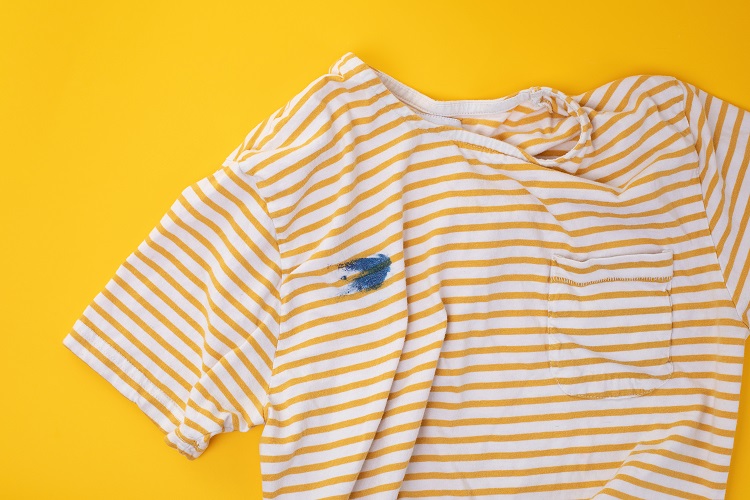
If you have got ink on your clothes or soft furnishings, or accidentally washed something with a pen in the pocket, you will know how tricky it can be to get ink stains out of fabric. If not dealt with quickly or correctly, ink stains can ruin your clothing.
Different solutions and methods are required to remove ink stains, depending on the type of ink and also the material that is stained. To avoid doing more harm than good, follow our advice on how to remove ink stains from clothes.
Removing permanent ink
As permanent ink is formulated to last forever, it is not always possible to remove it. The success of removing a permanent ink stain depends largely on the material that is stained, the colour of the ink, and how long the ink is left to set in.
To remove fresh permanent ink stains, you will need plenty of paper towels and rubbing alcohol. Place a paper towel underneath the stain then apply rubbing alcohol to the stain with a sponge or paper towel and carefully rub the affected area.
Keep replacing the towel underneath with a clean one whenever it becomes too damp or dirty, until no more ink is being transferred from the garment to the towels.
Rinse the garment in cool water and check whether the stain is still visible. If it is, then try the previous steps again. Once the stain has been removed, wash the garment as usual and air dry.
If after trying again, the stain is still visible, or if the stain has been allowed to set in for a while, then you could try a dedicated permanent ink stain remover or bleach, if your garment is bleach-safe.
Removing felt tip pen ink
Felt-tip pen ink can be time-consuming to remove, but should be easier to do and is more likely to be removed than permanent ink. To remove felt tip pen ink, you will need hot water, ammonia, and stain-removing, bleach-free laundry detergent.
Start by rinsing the stain under cold water to flush out as much of the ink as you can before soaking the garment in a solution of hot water and laundry detergent with a dash of ammonia.
Rub the stain with your fingers then let it soak for 30 to 60 minutes. If the stain is stubborn, you may want to add some more ammonia and leave to soak for a few hours or overnight, and rub it intermittently.
Rinse the garment once the stain has been removed or lightened as much as possible, then rub in a bit more laundry detergent and wash as you normally would, then allow to air-dry.
Removing ballpoint pen ink
The good news is that ballpoint ink is typically the easiest to remove. As with all ink stains, the sooner you deal with it, the better. To remove ballpoint pen ink, you will need paper towels, rubbing alcohol, and a pre-wash stain remover.
First flush the stain with rubbing alcohol. If it is a small stain, you may want to use an eyedropper to minimise the area to which the alcohol is applied. For larger stains, immerse the area in alcohol which has been poured into a small dish and allow to soak for 15 minutes.
Use a clean paper towel to blot the stain and continue blotting until no further ink is removed from the fabric, then rinse the area with cool water and apply a pre-wash stain remover. Wash the garment as usual with a suitable fabric-safe bleach.
If the ink stain is still present after being washed, repeat the above steps again until the ink has been removed.
Things to consider
Before getting into our tips and tricks for removing ink stains, it is important to note a couple of things that you should be aware of first.
When using rubbing alcohol to keep it away from open flames as it is flammable, and to wash any garments thoroughly after applying alcohol to ensure it is washed out.
Although rubbing alcohol should not cause damage to most fabrics, try applying it in an inconspicuous area before applying to the affected area to air on the side of caution.
You should never dry stained garments in a tumble dryer. The heat will set the stain and make it even more difficult to remove.
If a garment should be dry-cleaned only, do not try to remove any stains from them yourself at home as you may ruin them. Dry-clean only garments or particularly stubborn stains will require specialist cleaning.